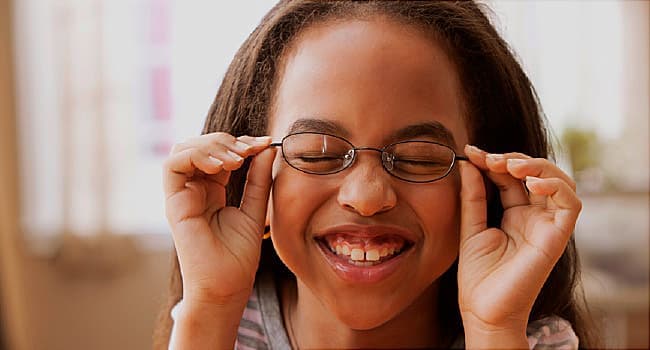
 health
health 
Have you been told that your child needs glasses? Health experts estimate that almost half the U.S. population — 42% — is myopic (nearsighted), a figure that has almost doubled over the past three decades and continues to grow. But being nearsighted is more than just an inconvenience, it can pose long-term hazards.
While glasses, contact lenses, eye drops and surgery can correct the effects of myopia and allow clear distance vision, they treat the symptoms of the condition, not the thing that causes it — a slightly elongated eyeball in which the lens focuses light in front of the retina, rather than directly on it.
“When the eye becomes longer, the tissue of the retina and the structures supporting the optic nerve stretch and become thinner,” says Andrei Tkatchenko, MD, PhD, associate professor of ophthalmic sciences at Columbia University Irving Medical Center in New York. “This thinning increases the risk of retinal detachment, cataracts, glaucoma, and even blindness. The faster myopia progresses and the more the prescription increases, the greater the risk of these diseases.”
Children with nearsighted parents are more likely to be nearsighted themselves, and scientists have identified a lot of myopia-related genes. But genes usually work with a person’s environment to cause a disease. The top thing in the environment linked to myopia is close-up work such as reading or working on a computer or smart device. “Over the past 3 decades, the level of near work has significantly increased in most of the world,” says Tkatchenko.
Can the advance of myopia be slowed or even halted to prevent long-term complications? Tkatchenko says yes: “There is a clearly defined treatable period between ages 8 and 25 during which there is the greatest progression of myopia, and myopia control is most effective during those years.” He and other researchers are studying new methods for treating myopia. Multifocal contact lens have been found to be effective in slowing the progression of myopia in kiids. For those diagnosed with severe myopia, known as high myopia, specail contacts, worn at night can help reshape the cornea and help stablize the eye.
It’s important to make sure your child has the proper prescription for their glasses or lens becauseunder, and more importantly, over-corrected lens could actually contribute to the progression of myopia.
But there’s one simple prescription that could protect your child from getting myopia in the first place: spending time outside. “A number of studies have shown that outside activities suppress the development of myopia,” says Tkatchenko. Scientists aren’t sure why this happens, but one theory is that outdoor light stimulates the release of chemicals that signal the eye to slow its growth to a normal rate.
“Go outside and play. That’s the best thing parents can tell their children to help prevent myopia,” says Tkatchenko.
66%: Percentage increase in myopia in the U.S. between the early 1970s and early 2000s.
50%: Percentage of the world’s population that will have myopia by 2050.
4 in 10: Ratio of adults in the U.S. who have myopia.
1.25: Number of daily hours of outdoor time needed to cut the chance that a child will get myopia by 50%.
Find more articles, browse back issues, and read the current issue of WebMD Magazine.
24World Media does not take any responsibility of the information you see on this page. The content this page contains is from independent third-party content provider. If you have any concerns regarding the content, please free to write us here: contact@24worldmedia.com